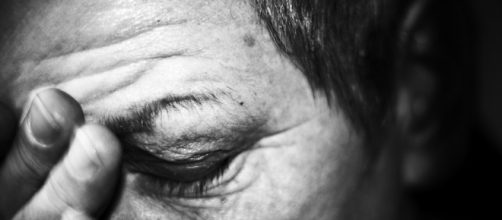One day in early June 2016, I rushed out of work early feeling like I had the flu. An Urgent Care trip turned into a visit to the Emergency Room, and I've been seeing different puzzled doctors and agreeing to a smattering of tests ever since. After a recent relapse, I saw a new physician in Washington, DC and learned that I am likely suffering from Lyme Disease. But what is Lyme disease exactly?
Lyme disease is "caused by the bacterium 'Borrelia burgdorferi' and is transmitted to humans through the bite of infected blacklegged ticks," according to the Center for Disease Control (CDC).
Lyme disease is on the rise
My recent diagnosis was not the first time someone had suggested Lyme to me while I struggled to figure out what was wrong. From colleagues at work to friends of friends, it seems like everyone I spoke to had a connection with the disease. Lyme has also been making headlines thanks to the impact the disease has had on well-known celebrities. What struck me is how common it seemed- and I'm not the only one to have noticed its recent popularity. This past week, NBC New York aired a five-part series about the disease, "interviewing patients, doctors, and research scientists."
Additionally, in a research paper published in April 2017 by The Royal Society, "the number of reported cases have tripled in the USA in the last 20 years." The researchers note that the massive increase is likely due to factors like climate change, deer migration patterns, changes in land use, reforestation, and an increase in reporting and diagnosis.
Approximately 30,000 cases of Lyme disease are reported each year, according to the Center for Disease Control (CDC), 95% of which come from the same 14 states.
But despite its popularity, Lyme disease is increasingly hard to diagnose thanks to unreliable tests and a wide range of symptoms, which can include everything from headaches and nausea to facial palsy and short-term memory loss. Making matters more difficult, the classic red "bulls-eye" mark around a tick bite that's a clear indication of Lyme, only occurs in 70-80% of infected individuals.
Easing symptoms with diet
Treating Lyme is complicated thanks to how intelligent the bacteria are and how they impact your immune system. According to Lymedisease.org, there are 3 main pillars of treatment: "killing bugs; strengthening the body (supporting the immune system, improving digestion); and reducing other stressors (heavy metal toxicity, hormone and other imbalances in the body, inadequate nutrition)." Antibiotic prescriptions attack the first pillar of killing the bacteria, but the real key is tackling the remaining two, both of which focus on diet.
The most important component of the Lyme diet is that it's anti-inflammtory. Inflammation exacerbates Lyme symptoms and prolongs treatment. Avoiding sugar, dairy, gluten, saturated fats, and alcohol is crucial to reducing gut inflammation and diminishing the severity of symptoms.
But thanks to recent diet trends like paleo and vegan, finding alternatives to your favorites foods is easier than ever.


